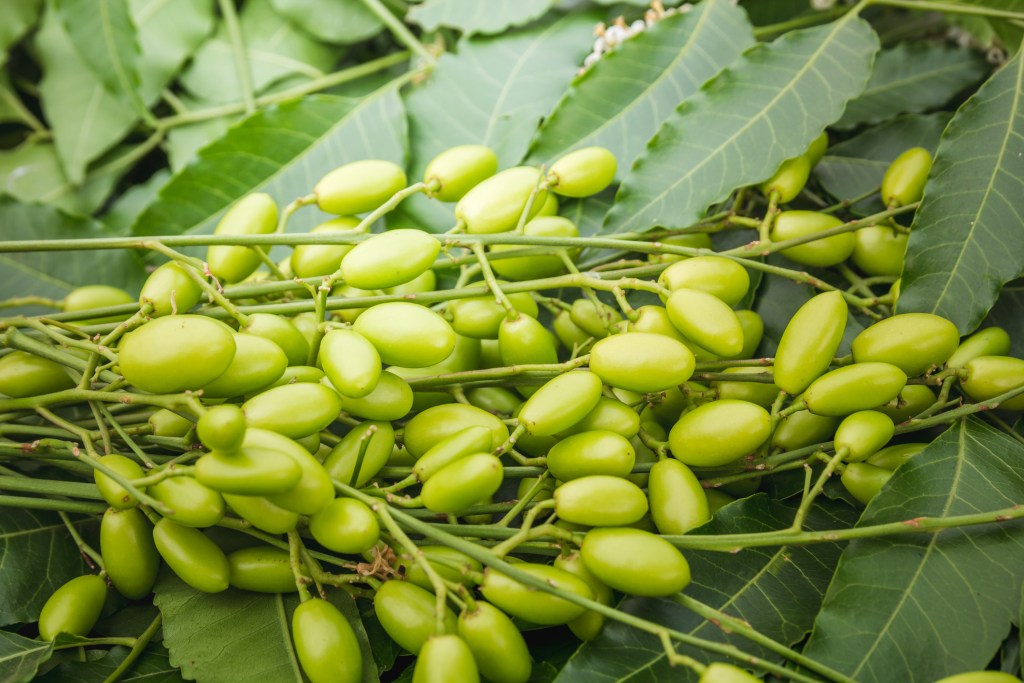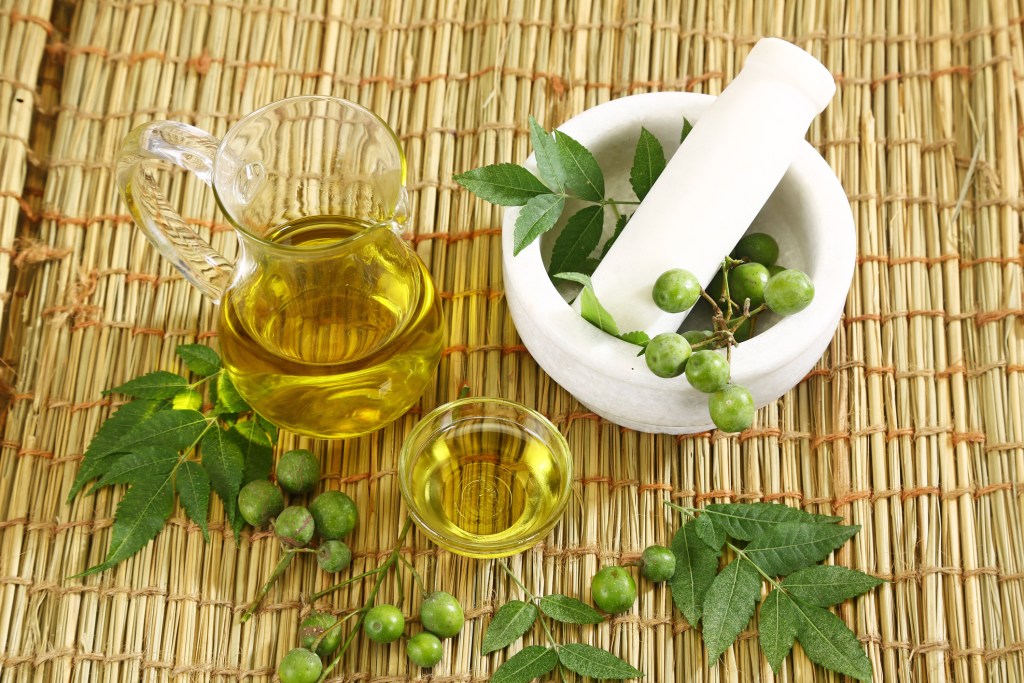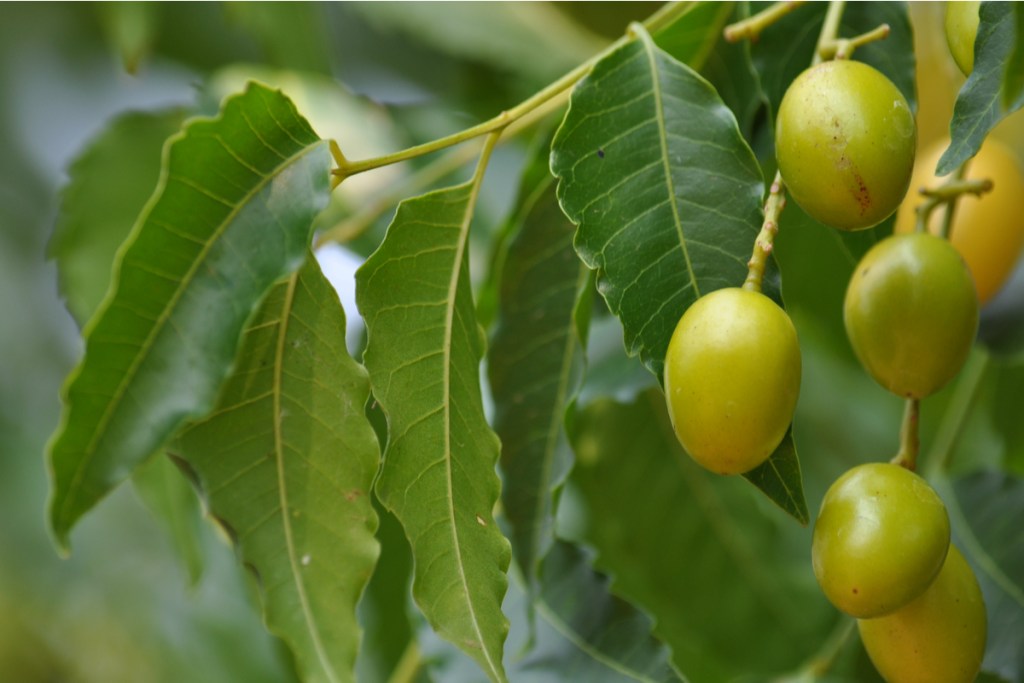If you’re a houseplant enthusiast who’s ever dealt with the headache of pests, chances are that you’ve probably heard of neem oil, which is supposedly a holy grail pesticide that’s natural, safe, and affordable. But just exactly what is neem oil and is it really as effective as it’s made out to be? For all your curious questions about neem oil, we’ve compiled a comprehensive guide to everything you need to know about this miracle worker in the plant world.

What is neem oil?
Neem oil is derived from neem tree seeds, which are broken open and pressed for oil. The neem tree is believed to be native to tropical and dry forests in India and other parts of South Asia, where it has been a key ingredient in traditional Ayurvedic medicine. Clear yellow in color, it has a bitter taste and a sulfur and garlic smell. For centuries, people have used neem oil for personal care items such as toothpaste and beauty products. Today, many gardeners view it as a reliable go-to for pest control.
How does neem oil work to control pests?
The active component in neem oil that helps repel pests is azadirachtin. This component essentially disrupts hormones in pests so they stop feeding, slowing down their growth and preventing their larvae from properly developing. Remember how we mentioned that it has a strong sulfur and garlic smell? This scent repels the pesky insects that you want to get rid of as well! Sometimes, neem can also suffocate insects if it contacts their breathing holes. Neem oil is especially helpful for managing pests such as mealybugs, thrips, scale, aphids, and more—essentially, these pests ingest the neem oil and then slowly die off. While gardeners primarily use neem to target pests, it can also be great for tackling and preventing fungal diseases such as powdery mildew.

How to use neem oil on houseplant pests
You can always buy insecticidal neem oil from your local garden center that’s mixed and ready to use. But if you want to create your own mix that’s potentially stronger, you have that option. The rough formula for a neem oil mixture to control pests is one gallon of water with one or two tablespoons of raw neem oil—the exact quantity can have some leeway for experimentation. Since neem oil is, well, an oil, it needs an emulsifier to mix with water. One or two teaspoons of an insecticidal soap or mild dish soap can work effectively for this.
Pour your mixture into a sprayer and shake it up before use. Since pests typically feed on leaves, spray the solution directly onto the foliage. Do make sure that your plant has some shade or only receives indirect light, as neem oil can cause foliar burn when combined with direct sunlight. Additionally, don’t overdo the spraying since that can also damage leaves. If you have a sensitive plant, patch test your neem oil solution on a small leaf or two to see if any adverse reactions occur. Spray your foliage every week until you notice no more pests on it.

Pros and cons of neem oil
Pros of neem oil
Neem oil is a go-to for houseplant issues because it’s gentle and relatively easy to access. Gardeners enjoy using neem oil on plants because it’s naturally derived and (relatively) nontoxic, making it an appealing alternative to synthetic pesticides. Neem oil, in small, diluted quantities, is safe when used around pets and children. Additionally, neem oil usually doesn’t kill off beneficial pollinators such as ladybugs and bees since these critters don’t feed on foliage. Plus, the active component, azadirachtin, breaks down quickly after exposure to microbes and sunlight.
Cons of neem oil
One major drawback is that neem oil is a relatively indirect way of tackling pests, so it works more slowly than an insecticide that takes pests head on. As we’ve mentioned before, this natural pesticide can actually damage your plant if you’re not careful, so avoid spritzing it on plants that are overwatered, underwatered, or otherwise weak. When it comes to safety, there’s also the matter that in large quantities, neem oil can irritate the eyes, skin, and stomach, so it’s a good rule of thumb to keep it away from your kids and pets.
After spraying down pest-ridden plants with water and soap, your next best bet is neem oil. While this pesticide has its limitations, it’s worth a shot, given that it’s natural, gentle, and relatively accessible. With a spritz of neem on your foliage every week, you’ll have a strong chance at defeating those headache-inducing pests once and for all!
Editors' Recommendations
- Everything you need to know about choosing the best rocks for landscaping
- Do you live in climate zone 2? Here’s what you need to know
- Do you live in climate zone 10? Here’s our guide to choosing the perfect climate zone 10 plants
- Gardening 101: 7 easy seeds to grow in cups for a tiny, adorable, and low-maintenance indoor garden
- Focus on color: Red plants that will bring a festive vibe to any home or garden




